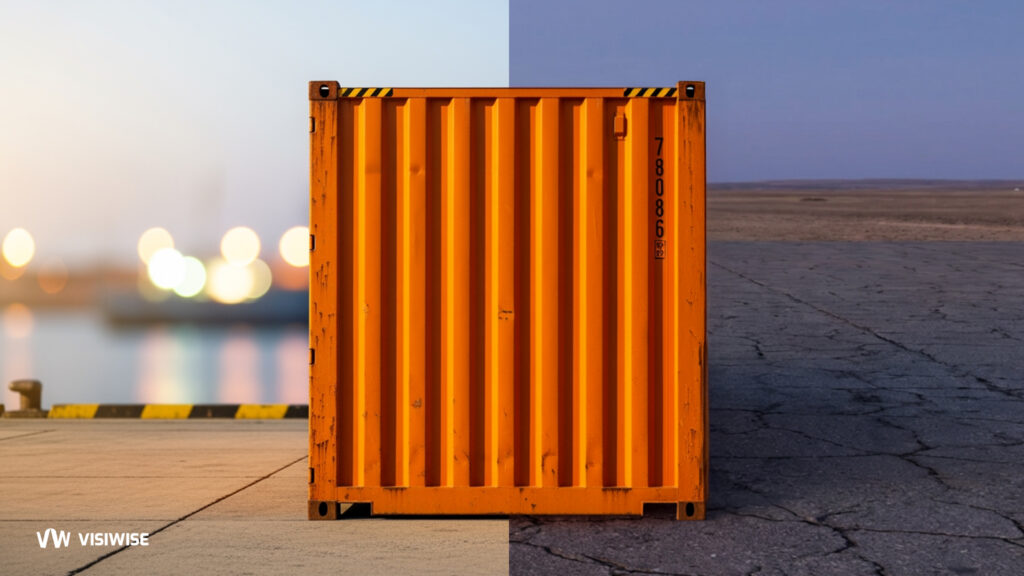Shipping costs from Canada to the U.S. depend on package size, weight, and destination. Larger, heavier packages and long-distance shipments cost more due to added resources and fuel. To keep costs low without sacrificing efficiency, it’s important to explore the most affordable shipping options and choose the method that best balances distance and price.
With all the options available—Canada Post, Sendle, Chit Chats, UPS, FedEx, and DHL—the costs and delivery times are incredibly diverse. This guide considers the most budget-friendly and easy shipping, compares the top carriers, and highlights how to be cost-conscious with your packages delivered securely.
Top Affordable Shipping Options
Here is a comparison between top budget-friendly shipping options:
| Service | Approx. Rate / Example | Pros | Trade-offs |
| Sendle | Around CAD 7.98 for small parcels | Very low rates, free pickup in many areas, reliable tracking, good for small eCommerce packages | Rates rise for distant U.S. zones; limited size and weight; sometimes slower than express couriers |
| Canada Post – Small Packet USA / Tracked Packet USA | “Small Packet” (no tracking) is the cheapest for lightweight shipments; “Tracked Packet USA” adds cost and tracking | Great coverage, reliable delivery, ideal for light non-urgent items | Tracking and insurance increase cost; size and weight limits apply; customs paperwork required |
| Chit Chats | Roughly CAD 10–15 for 1-2 lb packages with tracking | Uses U.S. Postal routes for lower rates; strong option for shippers near the U.S. border | Requires drop-off at specific locations; possibly slower handling; small extra fees possible |
| NetParcel | Offers multi-carrier rate comparisons | Lets users compare rates and save through volume discounts; convenient online interface | Final delivery depends on carrier’s timing and surcharges; may have minimum order volumes |
| ShippingChimp | About CAD 9–12 for small parcels (3–5 business days) | Balanced cost and speed; useful for small businesses | Fewer drop-off points; check for surcharges |
What Makes the Shipping Cheaper / What Raises the Cost
To understand how to reduce cost, these factors are critical:
- Weight & Size / Dimensional Weight
Small and light packages cost much less. Once you hit certain dimensional thresholds, the cost jumps. Ensuring you use as compact packaging as possible helps. - Tracking & Insurance
These add costs. If the item is low value (or you accept risk), using the cheaper “no tracking / no insurance” options can drop the price. - Service Speed
Slower services (ground / standard) are much cheaper. Express or overnight is expensive. - Departure Location / Destination Zone
Being close to the U.S. border, or using border-crossing / drop-off points, helps. Sending into nearer U.S. states helps. Rates depend heavily on distance and “zone” categorization. - Carrier & Partnership / Aggregation
Firms that consolidate shipments (e.g. Chit Chats, NetParcel) or use cross-border “hybrid” routes often pass savings. Also, business accounts / shipping volume can unlock discounted rates. - Customs / Duties / “De Minimis” Value
In many cases, shipments under a certain USD value (often US$800 for imports into the U.S.) are exempt from duties. Proper documentation helps avoid delays and hidden fees. - Extra Fees
Fuel surcharges, remote area surcharges, size fees, brokerage (if using courier vs postal) can increase cost. Often these are hidden until late in the billing process.
FedEx vs UPS vs Canada Post
Comparison for Shipping from Canada to the U.S. (East, Midwest, and West)
Here’s a comparison of FedEx vs UPS vs Canada Post for shipping from Canada → 3 major U.S. cities (one east, one mid-west, one west). Because exact rates depend heavily on origin, weight, dimensions, and service speed, this will be illustrative using typical package weights/delivery times and known published data plus average trends.
Assumptions for Comparison
- Package weight: ~2-5 kg (≈4-11 lbs) — a moderate parcel
- Medium speed option (not overnight, but 2-5 business days)
- Declared value not extreme and under “duty-free threshold” (so minimal import duties)
- Major U.S. cities: New York (East coast), Chicago (Mid-West), Los Angeles (West coast)
- Prices in Canadian dollars (CAD)
What the Data Suggests
Here are trends and specific comparable examples from recent sources:
- Canada Post is often cheapest among the three, especially for non-urgent, medium speed shipping. It tends to be slower but much more cost-effective.
- FedEx and UPS offer faster services, more reliability, better tracking, more service choices. But at a significantly higher cost for similar weight/distance.
- The farther west the destination (from Canada), or the more urgent the delivery, the larger the cost gap between Canada Post vs FedEx/UPS. West coast tends to be most expensive for cross-border courier services.
Estimated Comparisons to Each City
Here is a rough sketch of how the three carriers compare when shipping from, say, Ontario (or similar central/eastern Canada) to each U.S. city, using a ~5 lb (≈2.3 kg) parcel, medium speed.
| U.S. City | Canada Post (medium speed) | UPS (ground / expedited) | FedEx (comparable service) |
| New York (East Coast) | Moderate price; probably among lowest. E.g. ~CAD 35-45; delivery in ~3-5 business days. | Higher: maybe CAD 60-80 for similar speed with better tracking and faster guarantee. | Similar to or slightly above UPS for comparable speed; express services cost more. |
| Chicago (Mid-West) | Higher than to New York, maybe CAD 40-55 for same parcel, 3-6 days. | CAD ~70-95; transit time maybe 2-4 days depending on service. | FedEx close to UPS; sometimes a bit more for certain express options. |
| Los Angeles (West Coast) | Significantly more: CAD ~55-75 or more for similar parcel and speed; 4-7 days (or more). | UPS much higher: CAD ~90-130 depending on how fast; express = very costly. | FedEx tends to be similar to or slightly higher than UPS for same service; fastest options cost a premium. |
Strengths & Weaknesses by Carrier
| Carrier | What it’s good for in these cross-border cases | What you pay/ lose / risk |
| Canada Post | Lowest cost for non-urgent moderate parcels; large service area; good for light or medium weight shipments where speed isn’t crucial. | Slower; fewer premium service options; tracking might be less detailed; less flexibility; sometimes more delays at customs. |
| UPS | Reliable speed, more express/guaranteed services; strong tracking; good for medium/heavy parcels and for business use. | Higher price; surcharges fees (fuel, remote address, residential delivery) can add up; sometimes minimums. |
| FedEx | Similar benefits to UPS; sometimes better express options and better customer service; good for urgent, high-value or fragile items. | Also higher cost; dimension/weight surcharges; express services expensive; sometimes rate variation depending on origin/volume. |
DHL: Key Service Features & Constraints
| Feature / Detail | What You Need to Know |
| Service Options | DHL offers three main options: U.S. Standard, U.S. Priority, and U.S. Max. |
| Transit Times | Standard: usually 5–9 business days Priority: about 3–6 days Max: fastest, around 3–4 days |
| Weight Limit | Most U.S. cross-border services allow up to ~6.8 kg (≈15 lbs) |
| Size Limit | The total of length + girth shouldn’t exceed 127 cm (≈50 in) |
DHL Cost Examples
Here are examples of DHL cost estimates for similar shipments. These help illustrate how DHL stacks up vs FedEx / UPS / Canada Post (from previous):
| Origin / Route | Package Specs | DHL Service Level | Estimated Cost (CAD or USD, depending on source) | Transit Time |
| From Vancouver → New York | ~5 lbs, small box (~5×5×5 in) | “Fast / Standard Delivery” via DHL in NextSmartShip’s data | about US$115–US$120 / something in that range for a one-day or “fast” option (note: same-day or 1 business day in some listings) | 1 business day or equivalent “fast” service |
| Another case: 2 kg parcel from Canada → U.S. via DHL-Express Worldwide | ~2 kg | Express Worldwide | approx CAD $48.03 for 2-3 working days in some pricing examples. |
Comparison with Earlier Estimates (for 5 lb / 2-5 kg parcels)
To compare with your earlier benchmarks (FedEx / UPS / Canada Post to NY, Chicago, LA) for similar weights:
- DHL is considerably more expensive when you want faster service (1 business day or “fast delivery”).
- For moderate speed but still express (2-3 days), DHL tends to be cheaper than the super-fast FedEx/UPS options but still notably more than Canada Post or ground/courier hybrids.
- For slower / more economical shipments, DHL’s higher minimums and premium tend to reduce its competitiveness.
Estimated Rates for East / Midwest / West U.S.
Here’s an extrapolation (rough estimates) of what DHL might cost in your earlier three city cases, for a ~5 lb (2-5 kg) parcel, with moderate-fast express service (around 2-3 business days), sending from a central/eastern Canadian city. These are rough because exact origin matters a lot:
| Destination City | Estimated DHL Cost | Comparison Notes |
| New York (East Coast) | Probably in the ballpark of CAD 110-140 for 2-3 day express / priority service | Significantly more than Canada Post’s moderate service; similar or slightly above UPS & FedEx express for that speed. |
| Chicago (Midwest) | Likely CAD 120-160 for similar express service | A bit more, due to transit distance; still premium cost. |
| Los Angeles (West Coast) | Could be CAD 150-200+ depending on how fast you want it | Long distance + speed premium make this expensive. |
Graph of Average Shipping Costs

Here’s a graph of average shipping costs from Canada to three major U.S. cities for a ~5 lb parcel.
- Y-axis: Cost in CAD
- X-axis: Destination city
- Lines: Each carrier/servic
You can clearly see that Sendle/Chit Chats are cheapest, Canada Post is moderate, and DHL is the most expensive for fast deliver
Conclusion
The cost of shipping from Canada to the U.S., cost depends on many factors such as package, weight, size, speed, and carrier choice. Sendle and Chit Chats are perfect choices for small to moderate parcels, particularly for non-urgent shipments. Canada Post provides a reliable middle-ground with moderate pricing. In the meantime, FedEx, UPS, and DHL excel in speed, tracking, and service reliability but at significantly higher costs. Choosing the right service requires balancing delivery speed, tracking needs, and total cost, with hybrid or discounted options often providing the best value for small businesses and cross-border eCommerce.



